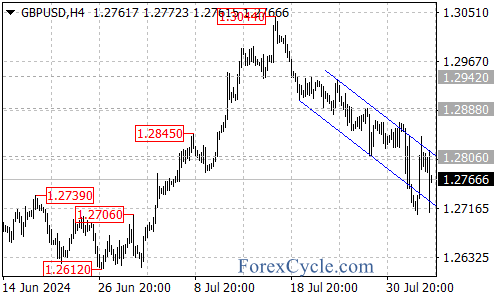Last week, the Bank of England (BoE) cut interest rates by 25 basis points, causing the GBP/USD to initially drop to around 1.27. However, following unexpectedly weak US non-farm payroll data, the pair rebounded, closing at 1.2801 on Friday.

Economic Indicators Support Sterling
The UK’s economic data paints a positive picture:
- July’s manufacturing PMI final reading came in at 52.1, surpassing both expectations and the previous value of 51.8.
- This marks the third consecutive month above the 50-point threshold, indicating expansion.
- The BoE has revised its 2024 GDP growth forecast to 1.25%, up from May’s projection of 0.5%.
- Political stability in the UK is improving, potentially providing further support for the pound.
Monetary Policy Outlook
The BoE’s decision to cut rates was a close call, with a 5-4 vote in favor. Governor Bailey maintained a cautious stance on future rate cuts, emphasizing the need to ensure inflation remains low and to avoid cutting rates too quickly or too deeply.Key points to consider:
- UK core inflation remains at 3.5%
- Service price inflation is notably high
- The BoE is likely to maintain a relatively hawkish position
- Markets expect less than 50 basis points in rate cuts from the BoE this year
Given these factors, and with expectations for Fed rate cuts remaining high, the pound has potential for strength against the dollar.
Technical Analysis
From a technical perspective, GBP/USD quickly rebounded after falling below 1.28 last week. The pair is now eyeing the 1.29 level as its next resistance. A breakthrough could open up further upside potential.
Traders should keep a close eye on upcoming economic data and central bank communications for both the UK and US, as these will likely influence the pair’s direction in the coming weeks.

